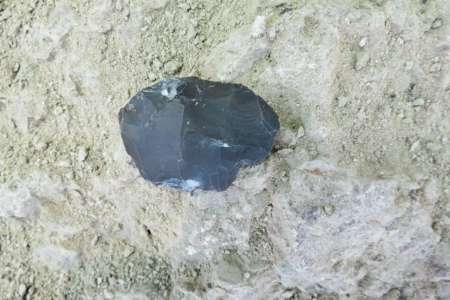Hamed Vahdati-Nasab who is the head of an Iranian-French archeological team, further remarked that studies will be continued and research works will be conducted on stone tools and animal remains by Iranian researchers at France National Science Center (CNRS).
He expressed the hope that by finalization of laboratory studies a brighter image will be provided on the date of the existence of man in this geographical region.
The archeologists pointed to the discovery of evidence attesting to the presence of the Neanderthal man of middle paleolithic, a period dating back to 40 to 50 thousand years ago, in Semnan’s Mirak.
He also mentioned gaining access to the depths of the human settlement, elucidation of ancient climatic condition of the area and absolute chronology for human settlements as the main targets of the primary excavations.
He said sedimentary findings reveal that Mirak Desert which is a dry area once had been a wet environment and perhaps a wetland or a semi-forest region.
Mirak and Delazian regions which are also known as Mirak and Delazian Hills were first identified during archeological studies in the year 1364 (1985-86). The most important characteristic of the two regions is the very wide distribution of stone tools on the ground of the area.
Later, in 1387 (2008-2009), random samplings were made by Vahdati-Nasab in Delazian and the result was forwarded to the Ancient Middle East Archeological Congress in Sapienza University of Rome.
Next year, Vahdati-Nasab and his accompanying delegation were commissioned to conduct systematic sampling in Mirak and Delazian and classify the collected objects.
The second season of archeological studies which started in 2009 at the head of Vahdati-Nasab with the collaboration of experts of the French National Science Center concluded after five years.
NS**1416
Mirak, an index for archaeological studies in Iran’s Central Desert
Jul 23, 2015, 2:21 PM
News ID:
81692351

Semnan, July 23, IRNA – Head of the archeological team in Mirak Paleolithic region of Semnan said on Thursday that archeological studies in the area of Mirak can serve as an index for record of life in the Central Desert.

